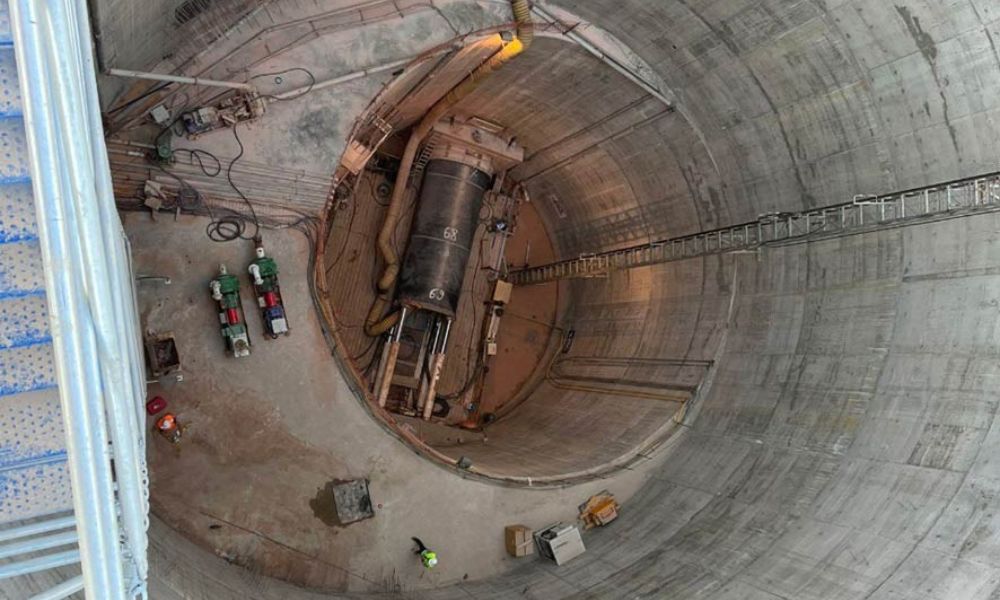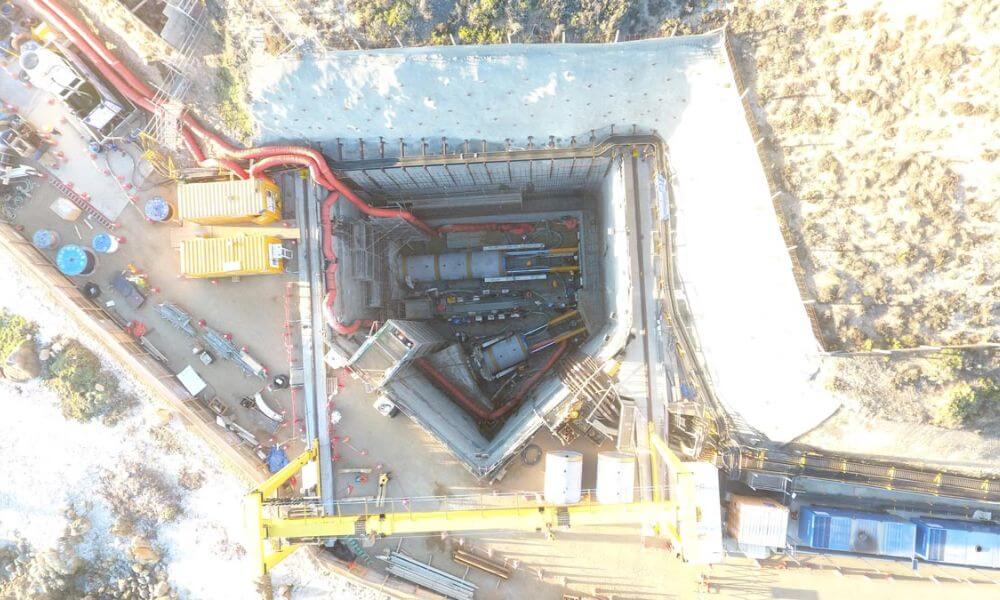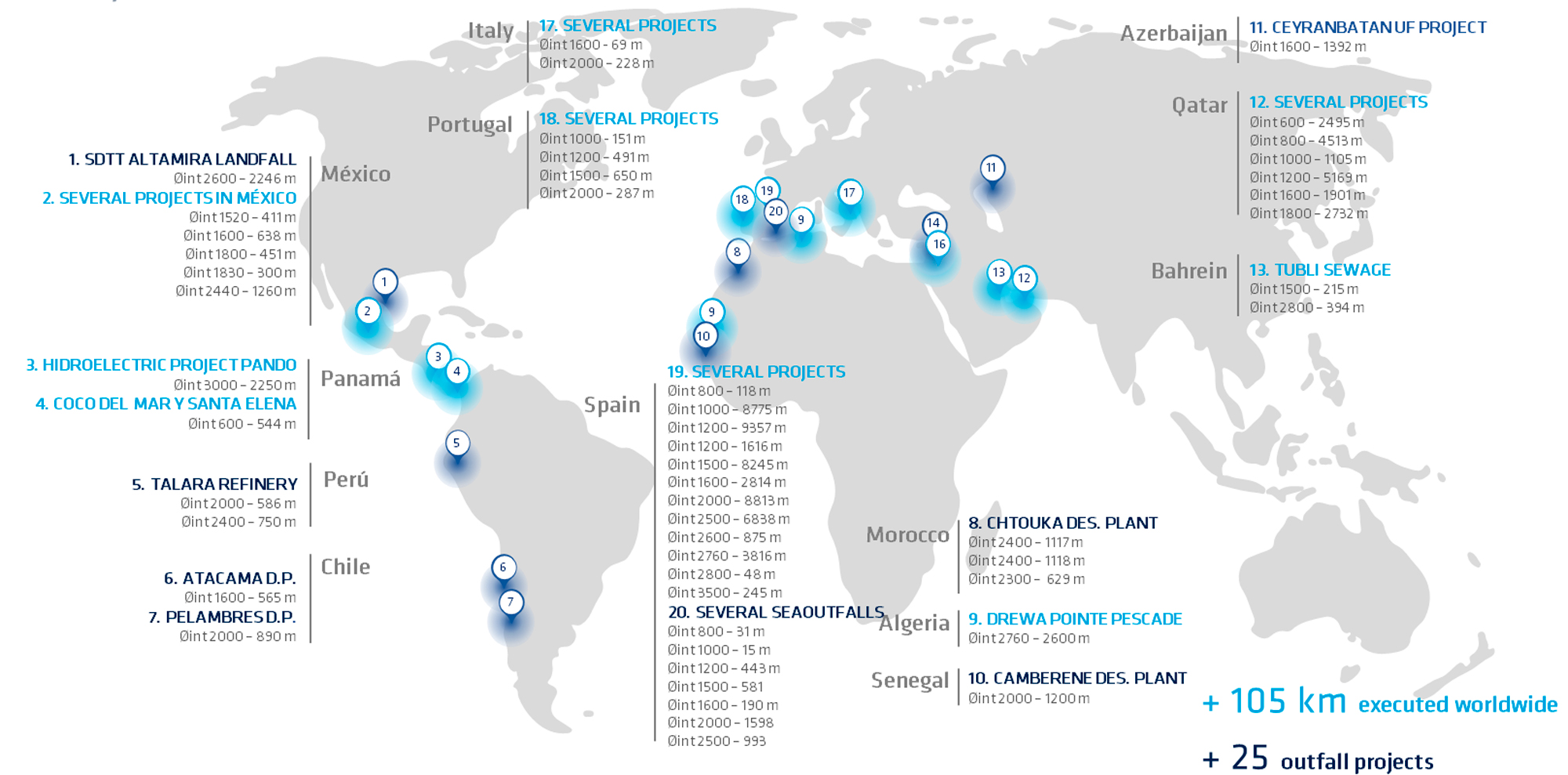Vertical Wells

Vertical Wells: Groundwater Extraction
The vertical wells permiten acceder a aguas subterráneas mediante perforación precisa y segura, sin necesidad de excavaciones abiertas. Son clave en proyectos de abastecimiento, redes de saneamiento, obras hidráulicas y minería.
En Eurohinca ejecutamos pozos con maquinaria especializada, adaptada a la profundidad y condiciones del terreno. Garantizamos caudales estables, seguridad estructural y trazabilidad completa del proceso.
Estos pozos pueden servir también como accesos auxiliares en obras subterráneas que combinan perforación vertical y revestimiento con hinca de tubería, o como pozos de ataque para micrótunel.
Types of vertical shafts and construction of vertical tunnels
rabajamos con dos sistemas principales:
Pozos perforados: mediante rotopercusión o perforación dirigida con camisas temporales.
Pozos hincados: técnica sin zanja para terrenos inestables o pozos de gran diámetro.
Ambas soluciones permiten instalar tubos estructurales, sistemas de bombeo o ventilación, y conectar con infraestructuras subterráneas mediante EPB tunnel boring machine o segment tunnel.
Estos trabajos siguen los requisitos de la UNE 103801:2007, norma técnica para la captación de aguas subterráneas mediante sondeos y pozos de extracción.

What they think of us
Ingenierías, constructoras y entidades hidráulicas valoran la fiabilidad y adaptabilidad de nuestras soluciones verticales, incluso en terrenos complejos o en entornos urbanos sensibles.
Projects around the world
Eurohinca ha ejecutado más de 105 km de infraestructura subterránea, incluyendo pozos verticales para extracción de agua, ventilación de túneles y accesos técnicos.
Actuamos en Europa, América y Asia bajo normativas locales e internacionales.
Descubre nuestras obras más destacadas.
Request for information
¿Necesitas construir un pozo para captación, acceso a túneles o ventilación?
Completa el formulario y te enviaremos documentación técnica, ejemplos de ejecución y presupuesto estimado.
Tecnología en perforación vertical y obras de captación
Explora artículos sobre diseño de pozos, perforación sin zanja, maquinaria especializada y ejemplos reales.
Ver más contenidos
Frequently asked questions about vertical wells
Los pozos verticales permiten perforar en vertical hasta capas profundas del terreno, con mínima afección superficial. Son clave en obras hidráulicas y se combinan frecuentemente con técnicas como el micrótunel or the pipe ramming, según el objetivo del proyecto.
Consultation nuestra sección de preguntas frecuentes.
What are vertical wells and what are they used for?
Vertical wells are boreholes drilled with specialized machinery, designed primarily for groundwater extraction. These wells allow access to water resources located at great depth, being essential in water management and irrigation projects.
How is the drilling of a vertical well performed?
The drilling of a vertical well is carried out through the different strata of the subsoil until the desired depth is reached. During the process, an interior space is left free where a final pipe is placed to ensure a constant flow of water from the depths to the surface.
What are the different types of vertical wells?
There are mainly two types of vertical wells: drilled wells and driven wells. Boreholes are drilled with specialized bits that are selected according to the hardness of the ground, while driven wells involve deforming the ground to insert a perforated pipe with a pointed end.
What machinery is used in the construction of vertical wells?
In the construction of vertical wells, specialized drills are used that can be adapted to the characteristics of the terrain. The choice of machinery and drill bits depends on the hardness of the rocks and other geological factors identified during the preliminary investigation phase.
In what soil conditions can vertical wells be constructed?
Vertical wells can be constructed in a variety of ground conditions, from soft to rocky soils. The drilling technique and well type (drilled or driven) are chosen based on the specific soil characteristics, ensuring a successful and durable installation.
What is the difference between a drilled well and a driven well?
The main difference lies in the method of execution. A drilled shaft is made using bits that drill the ground according to its hardness, while a driven shaft involves the insertion of a pipe by deforming the ground and directly sinking a perforated pipe with a sharp point. Both methods are chosen depending on the type of ground and the objective of the project.


